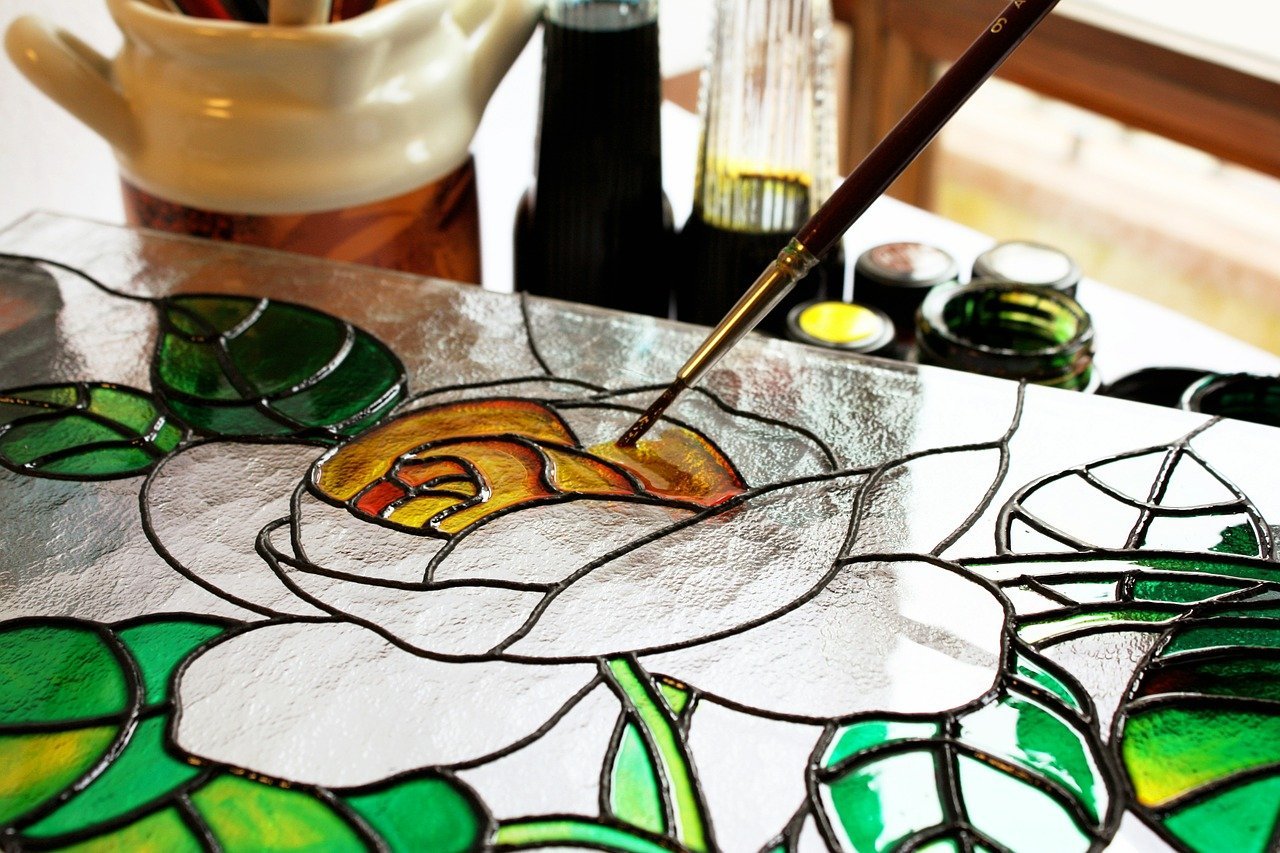
What Is The Difference Between Painted vs. Stained?
Hook: When it comes to laying down colors, people are more familiar with the concept of painting, but how is it different from staining, and which is better? In this article, we tackle the difference between painted vs. stained and which outcome is better for beginners.

When it comes to laying down colors, most of us are more familiar with the concept of painting. However, there are more ways to add color to an image other than painting. Methods like staining, digitally filling out colors, or using oil pastels or pencils are also utilized. All of these methods have different results, but the outcome is pleasant nonetheless.
Staining provides a different outcome, and it’s less known because most people reserve this for painting glass. For today’s article, we discuss the main differences between painted vs. stained.
If you are looking for a more creative way to lay down color that isn’t painting, then you should try staining. Usually, you get better results when you stain because the surface absorbs more of the color.
However, many people enjoy the concept of painting because it is easy to do, and anyone can try. But, you shouldn’t limit yourself to doing one technique because it’s easy. A challenge is always good to take on.
If you want to know more about the difference between painted vs. stained or if you want to try a different coloring technique, read on to learn more about them.
How Do You Differentiate Painted vs. Stained?

Art comes in different forms, and when it comes to coloring, there are several techniques. Painting is one of the most popular forms, and anyone can do it with a paint-by-numbers kit.
However, if you’ve seen the glass in churches, you’ll notice that some of them are brightly colored and produce beautiful results when the sun hits them just right. These glass fixtures are not painted but stained. So, what is the difference between painting and staining? Here are some ways you can differentiate painting from staining.
Painted vs. Stained

Before we discuss the difference between painting and staining, we should first describe the similarities. The main similarity is that both paints and stains have the same chemical components and pigments that allow them to impart color.
However, once you open a can of either of these things, that’s where the similarities end. Here are the main differences you’ll find in paint and stains.
-
Stains have a thinner formula: When you use a stain, you will notice it has a thinner formula. This makes it ideal for layering because it won’t cause the layers to lay on top of each other.
-
You don’t have to use a primer to stain: For paint, sometimes you need a primer to get the best color pay-off. This is not the case for stains, which makes it ideal if you don’t have the budget for a primer.
-
Stains seep into the surface: This is more about wood because when you paint wood, you’ll notice that the paint just sits on the surface, whereas a stain would seep into the surface.
-
Stains don’t come in a lot of colors: One of the setbacks of stains is that there aren’t a lot of colors and finishes to choose from.
- Stain is cheaper than paint: Since stains have a basic color palette, they are also a more affordable option. If you’re looking to change the color of your wooden walls, you might prefer choosing stains because they take less time to apply and with smaller quantities, thus saving you money.
Which is Better For Beginners?

Doing DIY activities in your home like painting your room and renovating your house can be difficult. This is why you should check what techniques you’re going to do before you start, so you don’t regret the decision.
When it comes to wooden walls or floors, we suggest staining because it has a lighter and more natural finish. In terms of difficulty, we think that learning how to stain would be more difficult because you might add too much of a stain, and that would alter the outcome of your project.
However, if you’re up to learning a new skill, you might want to consider learning how to stain.
Conclusion
Now that we know the difference and similarities between painted vs. stained, the question is, which one works better for you? Many people would say stick to painting because it doesn’t require as much technique as staining, but sometimes maintaining the paint can also be a hassle.
Whether you’re new to doing home renovation projects or just want to try different techniques, you might enjoy staining. Just make sure to do the proper research so you don’t regret your decisions.
Aside from that, let us know which coloring technique you want to try and show the outcome!





